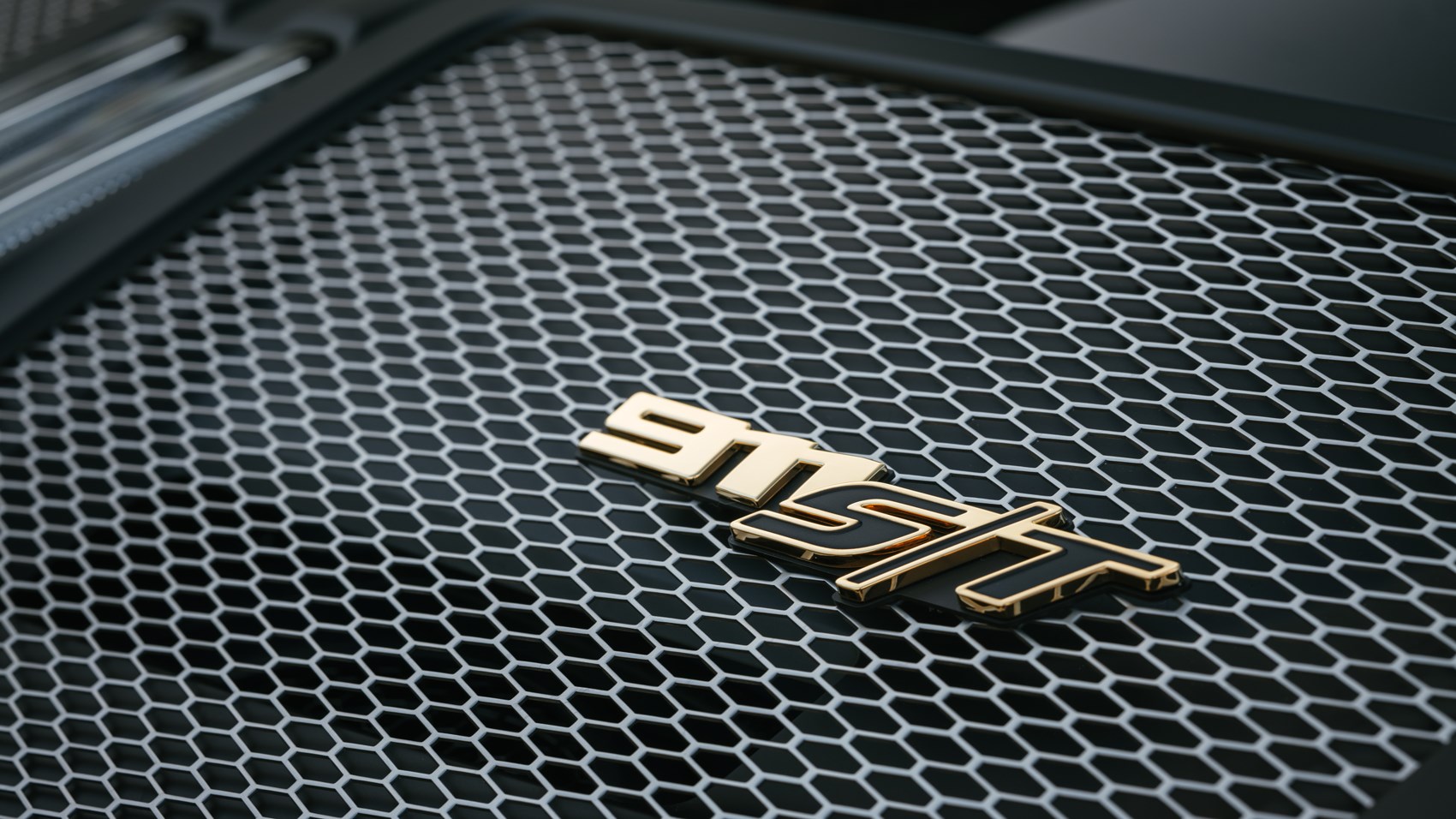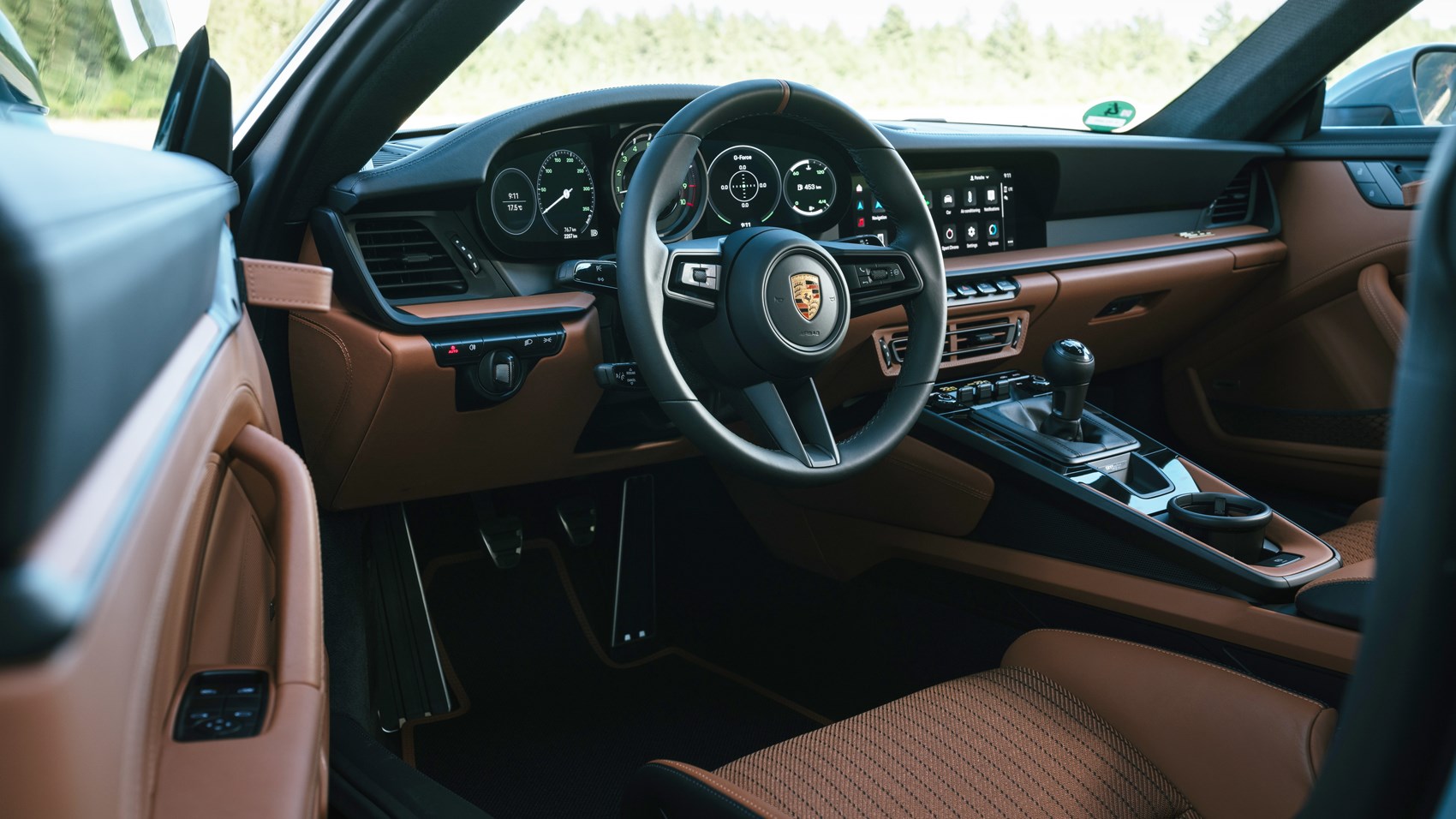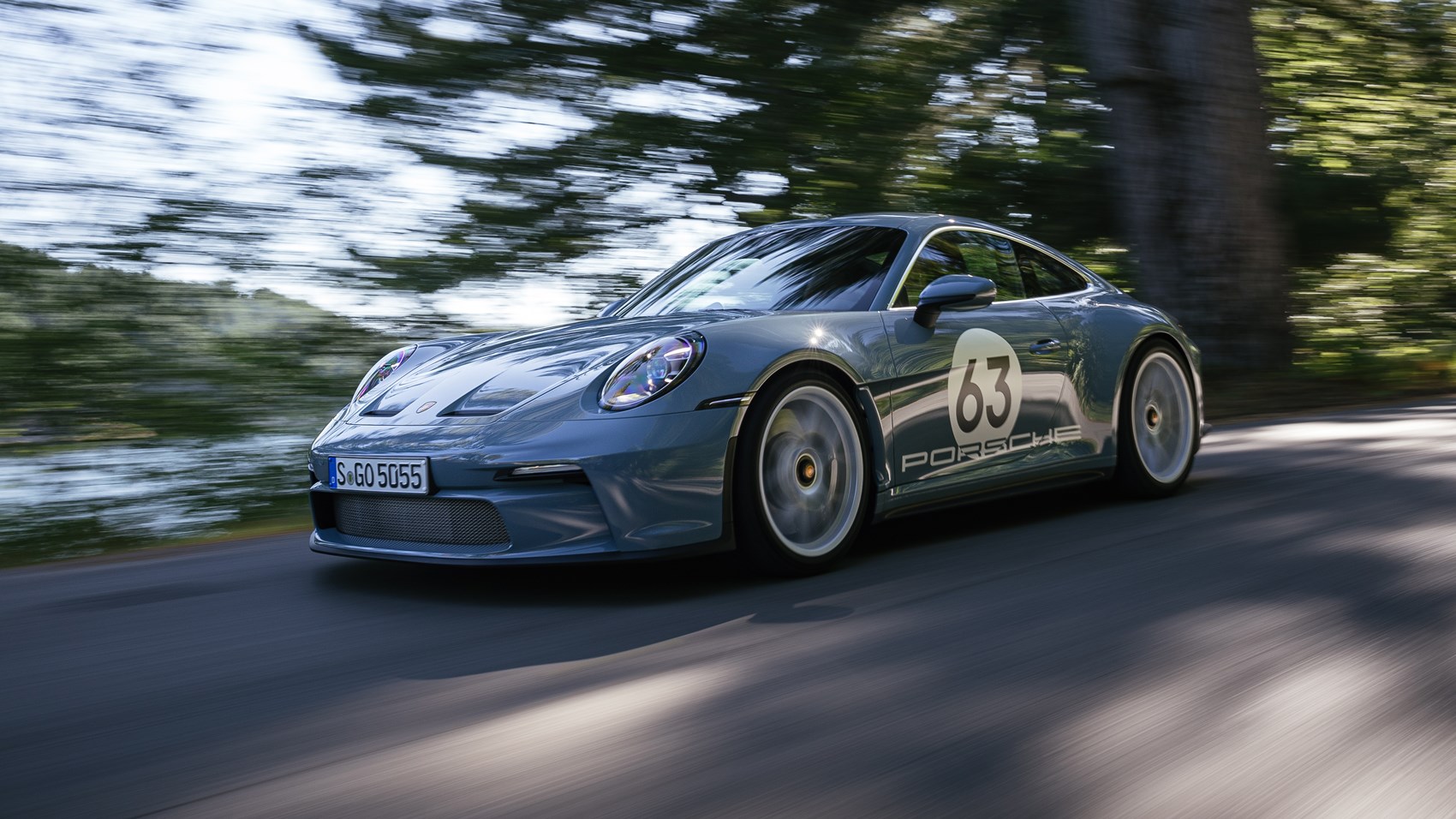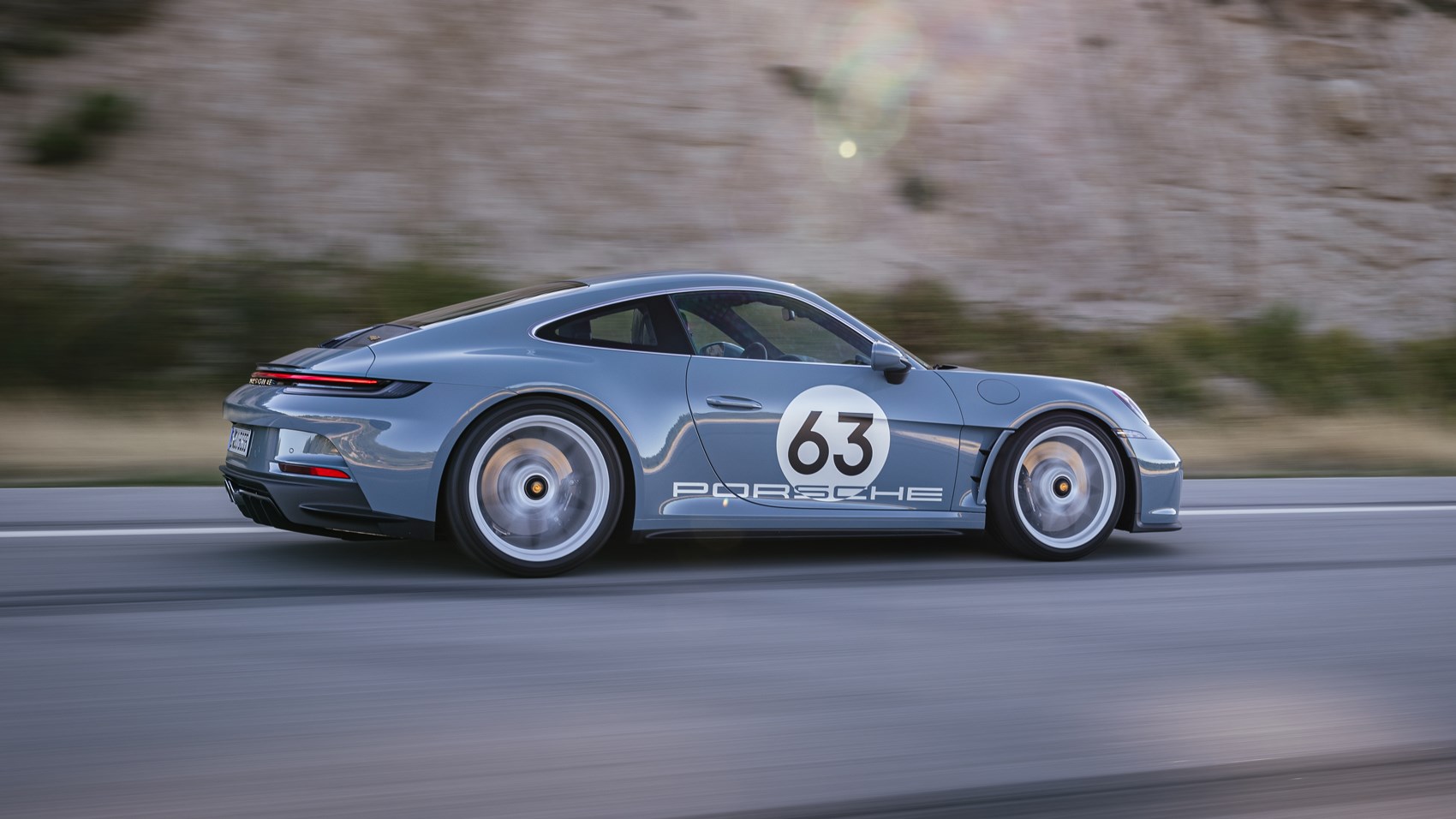► Limited-edition 911 60th anniversary special
► 911 S/T has GT3 RS motor, less weight, wingless
► Costs £231,600; 1963 to be built
If you’re thinking that £231,600 is a lot of money for a Porsche 911, I give you Holger Bartels, chief engineer of vehicle performance. Because Herr Bartels spent an entire year of his life, 12 whole calendar months, doing nothing else but developing and fine-tuning the PASM dampers on the new Porsche 911 S/T.
This on a car that borrows the spring rates and suspension pick-up points from the 911 GT3 Touring, a vehicle that’s hardly a wobbly blancmange in the handling department. Even for a company obsessed with the finer details of how a car handles, it’s quite some commitment.
This, then, is the most expensive 911 to ever come out of Stuttgart, a 60th anniversary limited-run special whose badge harks back to the early years of the 911 and something that completely redefines what is possible from a 911.
Harking from the famed GT department at Porsche, the S/T is based on the same chassis hardware as the GT3 Touring, including its narrower body, but with the RS’s engine. It is, claims Andreas Preuninger, boss of the GT department, the best drivers car for the road that Porsche has ever created.

Because of that dual ancestry, Porsche is justified in using the S/T badge. Granted, originally this was reserved for competition, track-focused cars, but in using the best parts of the 992 RS and Touring, Porsche is mimicking what it did in 1969 when it took the best bits of the ‘S’ and ‘T’ models.
Light-weighting in the extreme
Preuninger and his colleagues have been through every element of the current 992, fine tuning every last drop to make it meet their remit. Because it’s a road car and not a track car, it can ditch the RS’s PDK gearbox – lap times aren’t the be-all and end-all with it, so it can scrap the race-focussed transmission that normally sits alongside the 4.0-litre, 518bhp flat six. A short-ratio, six-speed manual is in its place, along with a single-mass flywheel that saves 10.5kg.
The RS’s rear-wheel steering has been binned, saving 6.5kg and, because that set-up draws a surprising amount of electrical power, Porsche can fit a smaller capacity lithium-ion battery. The result of the latter is another 3kg saving compared to the GT3 Touring.
Magnesium wheels are standard, unlike on the Touring, saving 10.6kg. Carbon ceramic brakes, measuring 410mm at the front and 390mm at the rear, are also included as standard.

The doors (borrowed from the RS) are carbon fibre. As is the double-bubble roof (unique to this car) and the front and rear bumpers. Even the door handles (not flush-fitting unlike on the Touring, you’ll notice) are made from CFRP.
Get where I’m going with this?
It’s the lightest 911 currently on sale, a whopping 70kg lighter than the RS, itself hardly guilty of indulging in a bit too much cream with its pudding.
A CFRP roll cage is optional for the interior (£3707), as is a Heritage Design package (£14,238). The latter gives you historic Porsche crests on the bonnet and wheel centre caps, a unique Shore Blue metallic paint and roundels on the doors, thankfully delete-able. The seats are a highlight, having a centre section in fabric with a pin-stripe finish, and being set so low that they make a Taycan feel like a monster truck. The Design pack also brings leather to elements like the door opener loop, air vents and cupholder.
Worth it? The seat material looks mega, but the cost pushes this 911 towards a quarter of a million quid and that takes some swallowing.
Elsewhere, save for a green rev counter dial that harks back to the 1960s, the interior is very much the current 911 blend of simplicity and familiarity.
Is the new Porsche 911 S/T predictably brilliant to drive?
Despite all the focus on light-weighting, the S/T looks innocent when you approach it – no wings bar a small Gurney flap at the rear, minimal venting around the wheel arches. But don’t make the mistake I did when I first walked up to the car and assume that the lack of aggressive rear wing means this is a slackened-off RS. The S/T is as raw and uncompromising as its be-winged sibling.
With the clutch chuntering behind you and sounding for all the world like something has come expensively loose in the engine bay, and with a seating position that’s as slammed as any car I can remember, the pinprick focus of the S/T is immediately obvious. This is not a car that is going to come lightly to you. It’s one that is going to demand your entire attention, letting you into its world only when it deems you worthy.

It’s one of the most intimidating cars I’ve driven. The sibling RS is surprisingly benign with its dampers slackened off and easy-to-grasp a set of paddles, whereas the S/T requires far more concentration, especially when it comes to changing gear. Because of the lightweight flywheel, it’s like driving a racing car – dip the clutch and the revs instantly die; minimal inertia, maximum difficulty to balance the revs smoothly when you feed the clutch back in. Even Preuninger himself doesn’t get it right all the time: ‘coming from a GT3, my wife was beside me and complaining.’
But the rewards are incredible. Preuninger wanted the front and rear ends to be ‘100 per cent in synch’, something that’s been delivered in spades. The steering is the highlight for me – it’s electro-assisted but with a level of feedback and precision that only the very best hydraulic systems achieve. It’s a joy to tip the car into a bend at high speed, feeling the nose bite and rotate with a precision that makes every turn memorable. There’s zero slack, with a predictable and flat body following your every command that gives an extreme level of confidence. There’s still a little bit of Porsche’s traditional rear-engined feel, a slight wobble from the apex to the exit, but the balance is spot-on.
The only time the steering caught me out was in a gently sweeping corner on the motorway. It’s here where you can feel the lack of stability that a rear-wheel steer system would give – not in a dangerous way, but it turns in slightly quicker and sharper than you expect so you end up having to wind off the lock a fraction to avoid apexing too early. The GT3 Touring’s system would make the arc a bit more gentle.
The engine also delivers on the raw remit. It’s not a unit that likes dealing in gentle driving, with a screaming Le Mans-esque soundtrack that climbs inexorably to the 9000rpm red line. Predictably responsive, it chunters and grumbles if you lift off too dramatically into a corner and is another element of the S/T that feels like someone forgot to tell it it’s a road car. Even the rev needle hunts at idle, just like a race engine.
Weirdly, though, the 4.0-litre petrol is surprisingly punchy in the mid-range. It’s the same naturally-aspirated flat six that appears in the GT3 RS and matches that car’s 518bhp, but the way it can pull easily from 3000rpm makes it less hard work than you’d expect.

In typical GT department fashion, there are minimal driver settings. You can opt for auto-blip and a sports exhaust note (the former vital for smooth driving if you’re as cack-handed as me, the latter difficult to tell the difference between the two) and there is also a sport button for the suspension. By Preuninger’s own admission, the nomenclature is confusing – ‘we should have put a different label on it’ – because it doesn’t make the car a bone shaker, with the difference between the two settings marginal in the extreme. By tightening up the rebound ever so slightly, Preuninger says it actually gives the car more traction. You can feel it on expansion joins, where the S/T settles down more assuredly after the bounce.
In either mode, the car is stiff, with torsional rigidity that shocks on cross axle bumps, but not to the point of being undriveable over lumpy asphalt. We experienced some incredibly shocking tarmac on the launch and although you knew you’d dropped a wheel into it, it wasn’t completely unpleasant. It’s no GT relax-athon, but it’s no Radical either.
Porsche 911 S/T verdict
Only Porsche could get away with charging more for a car that is probably less usable. For me personally, the S/T is a bit too raw – I’d want a car that can double up on the daily tasks a bit more, rather than being strictly limited to a Sunday morning blast. But for those that can and do, it’s the finest 911 road car of recent times. It really is that good. Time well-spent, Herr Bartels.